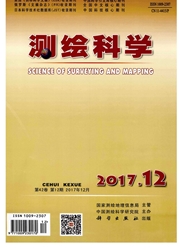

 中文摘要:
中文摘要:
兰州秦王川地区是国家级开发区-兰州新区的所在地,过去20年来土地利用景观格局发生了巨大变化。文中基于4期Landsat TM/OLI卫星影像的分类结果,采用状态转移矩阵和景观生态学方法分析了1994-2013年间秦王川地区土地利用景观格局变化。结果表明:1)大面积砂田被水浇地置换,水浇地、荒草地和砂田面积从1994年的100.39km2、709.52km2和266.09km2改变到2013年的389.13km2、531.81km2和10.18km2。居民地的土地面积从1994年的23.32km2增加到2013年的107.89km2。2)景观多样性和破碎性增加,优势度降低,斑块形状趋于复杂。3)"引大入秦"工程建设改变了区域水资源利用格局,人口增长和新区开发建设促使过去的水浇地和农村居民地被新城镇和工业用地类型所取代。针对景观生态质量下降的问题,提出发展高效精准农业,增加绿色生态廊道景观和湿地生态补水的建议。
 英文摘要:
英文摘要:
Qinwangchuan area has been assigned to be a new state-level development zone named New Lanzhou Development Zone( NLDZ) since 2012,where land use pattern changed greatly in the last decades. Based on the classification derived from four scenes of Landsat TM / OLI images acquired from 1994 to 2013,this study performed an approach to landscape pattern changes by using state transition matrix analysis and the landscape ecology method. We addressed that:( 1) irrigated cropland increased from 100. 39km2 to 389. 13km2,desert grassland decreased from 709. 52km2 to 531. 81km2 and sandy cropland decreased from 266. 09km2 to 10. 18km2 during 1994 ~ 2013.( 2) The diversity and fragment of landscape increased,but the dominance index reduced.the patch shape tended to be complex.( 3) 'Yindaruqin' irrigation project changed the pattern of local water utilities; the increase of population and the construction in NLDZ lead the rural settlement and road were mainly removed by new town and industrial land. To solve the irrigating land and water land fragmentation problems,suggestions such as developing effective agriculture,increasing green ecological corridor landscape and ecological water supply were put forward.
 同期刊论文项目
同期刊论文项目
 同项目期刊论文
同项目期刊论文
 期刊信息
期刊信息
